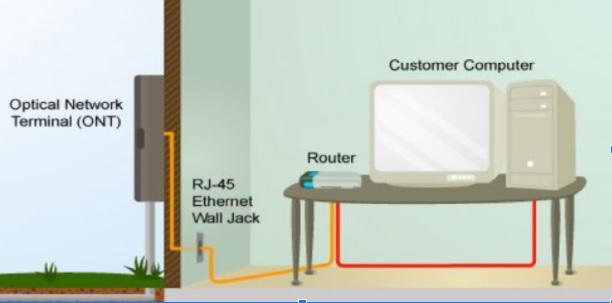If you have a fiber internet connection, an ONT serves as an integral part of your system. Without it, your devices wouldn’t know what to do with the incoming signal. Think of an ONT as a modem for your fiber optic internet. But it’s becoming increasingly common for people to purchase aftermarket routers in an effort to try and boost their Wi-Fi coverage or to take advantage of additional features like enhanced parental controls, mesh networking, enhanced security, and guest network access. Fiber internet uses fiber-optic cables instead of coax cables, and these fiber cables are made of thin plastic or glass filaments that can transfer digital data in the form of light. Fiber-optic cables are much more efficient at sending data over long distances, simply because that data is moving as light pulses instead of as electrical signals that are subject to signal interference and distortion. Fiber networks are not only faster, they can also provide symmetrical speeds (the same upload and download speeds) for those who create content or conduct business from home. So, fiber cables have a faster signal, great. But regardless of how fast that data moves, it’s useless if your devices can’t interpret the signal. This is where an ONT comes into play. If you’re experiencing connection problems, check the indicator lights on your router to make sure they’re all properly lit. If everything looks correct, try rebooting your ONT. You can even try using an Ethernet cable to connect a computer directly to the Ethernet Port on your ONT device (the port’s name will be something like internet or WAN, but this will vary depending on the specific ONT device). This will help determine whether the issue is with your home network or with the ONT (or perhaps the fiber connection coming to your home).
